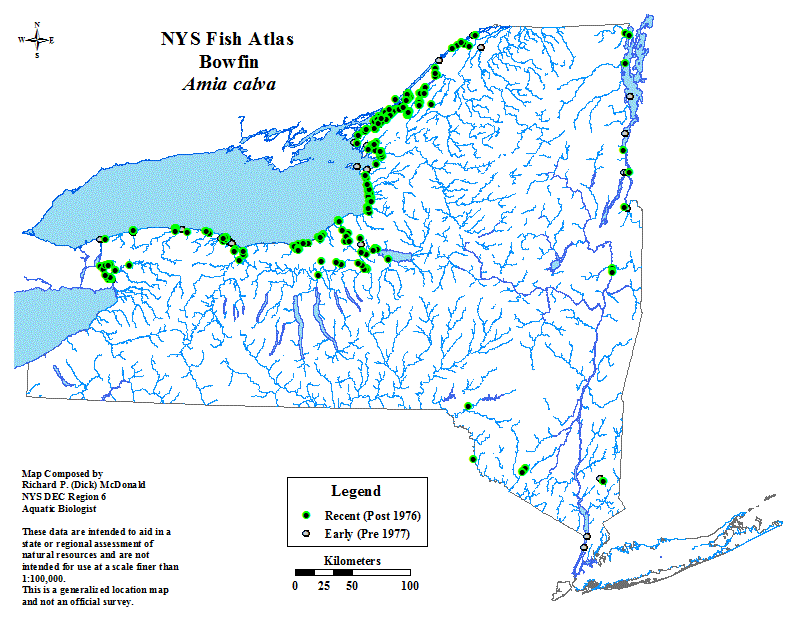Bowfin Family
Amiidae

Bowfin (Amia calva)
Bowfin are the lone survivors of an earlier primitive family of fish known mostly through fossils. They have retained much cartilage in the skeletal system and have bony plates covering the semicartilaginous skull. A distinctive bony gular plate is located on the under-surface of the throat between the lower jaws. The bowfin's olive-colored body is stout and slightly elongated. A very long dorsal fin helps in identification. Male bowfins have a black spot encircled with a yellow ring at the upper base of the tail; the female has a spot without a circle. In addition to gills, these fish have a modified air bladder, like the gar, that enables them to use surface air and to live in polluted or stagnant water unsuitable for most fish.
The distribution of the bowfin in New York is similar to that of the longnose gar. It occurs in northeastern New York, in Lake George, Lake Champlain, and the St. Lawrence River system (where it is relatively common). It is also found along the shores of Lakes Ontario and Erie. In central New York, it is known from Cayuga Lake, Oneida Lake, and from intermediate waters.
Bowfins are spring spawners. The male constructs a bowl-shaped nest in shallow water and guards the eggs and fry for several weeks. Adult bowfins usually reach a length of about 2 feet and weigh 2-5 pounds, although they may occasionally reach weights of up to 12 pounds.
Bowfins feed on all sorts of aquatic animals-crustaceans, adult insects and larvae, and small fish. Generally, they are a scarce fish of no commercial value. They are dogged fighters when caught on sporting tackle, but their flesh is generally considered poor eating.
Distribution of the bowfin in NY state.
A larger image of the bowfin is also available for download.
